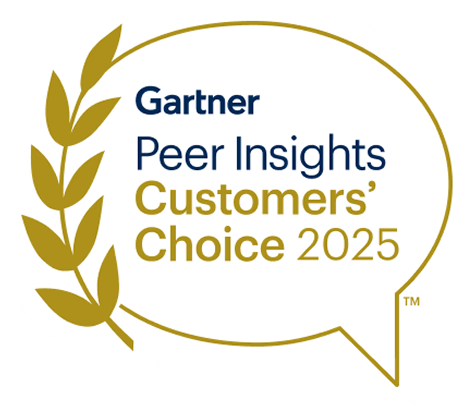How PCI DSS 4.0 Improves Your Security Posture
The Payment Card Industry Data Security Standard (PCI DSS) sets the bar for organizations handling cardholder information - any business that stores, processes, or transmits cardholder data. With the release of version 4.0, there are significant changes on the horizon.
Staying compliant with industry standards is crucial, especially when it comes to protecting sensitive payment card data. In this blog, we will explore how PCI DSS can enhance your security posture by establishing a continuous process to secure cardholder data.
Understanding PCI DSS v4.0
PCI DSS v4.0 brings several notable updates, emphasizing a more comprehensive and risk-based approach to data security. Companies in the payment card ecosystem must take note of these changes to ensure they remain compliant and resilient against evolving threats.
Increased Focus on Cloud and Service Providers
One of the key highlights of PCI DSS v4.0 is its focus on cloud environments and third-party service providers. As more businesses leverage cloud services for storing and processing payment data, it's imperative to extend security controls to these environments.
Expanded Scope of Requirements
With the proliferation of digital transactions, PCI DSS v4.0 expands the scope of requirements to address emerging technologies and evolving threats. The standard now covers a broader range of systems, applications, and processes involved in payment card transactions.
Emphasis on Risk-Based Approach
Recognizing that not all security threats are created equal, PCI DSS v4.0 places a greater emphasis on a risk-based approach to security. Organizations should assess risks systematically and prioritize security measures based on potential impact and likelihood of occurrence.
Enhanced Focus on Data Protection
From encryption and access control to data retention policies, organizations are expected to implement robust measures to prevent unauthorized access and data breaches. This will help mitigate the risk of data theft and ensure compliance with regulatory standards.
New PCI DSS 4.0 Release Implementation by March 2025
Out of the 64 of the new requirements, 51 are future dated due to their complexity and/or cost of implementation. This is relevant and important for any business that stores, processes or transmits cardholder data.
Further, it is crucial to focus on establishing a continuous process:
- Automated log analysis for threat detection (Req: 10.4.1.1)
- On-going review of access to sensitive data (Req: 7.2.4)
- Detection of stored PAN anywhere it is not expected (Req: 12.10.7)
How Sentra Helps Comply With PCI DSS 4.0
Below are a few examples of how Sentra can assist you in complying with PCI DSS 4.0 by continuously monitoring your environment for threats and vulnerabilities.
In today's threat landscape, security is an ongoing process. PCI DSS v4.0 emphasizes the importance of continuous monitoring and testing to detect and respond to security incidents in real-time. By implementing automated monitoring tools and conducting regular security assessments, organizations can proactively identify vulnerabilities and address them before they are exploited by attackers.
Use Sentra's Reporting Capabilities to Adhere With PCI DSS
Here you can see a detected S3 bucket which contains credit card numbers and personal information which are not properly encrypted.

This is an example of how Sentra creates a threat in real time, detecting suspicious activity in a sensitive AWS S3 bucket.

In the dashboard below, you can see open security issues grouped by different compliances frameworks.

Proactive Integration of New Compliance Controls
Sentra remains vigilant in staying up to date with changes in PCI-DSS, GDPR, CCPA and other compliance frameworks. To ensure continuous compliance and security, Sentra actively monitors updates and integrates new controls as they become available. This proactive approach allows users to automate the validation process on an ongoing basis, ensuring that they always adhere to the latest standards and maintain a robust security posture.
Implementation Timeline and Best Practices
It's essential for relevant companies to understand the implementation timeline for PCI DSS v4.0. With a two-phase approach, certain requirements are future-dated due to their complexity or cost of implementation. However, it's crucial not to overlook these future requirements, as they will eventually become mandatory for compliance.
These requirements will be considered best practices until March 31, 2025, after which they will become obligatory. This transition period allows organizations to gradually adapt to the new standards while ensuring they meet current compliance requirements.
Conclusion
As the payment card industry continues to evolve, so must the security measures used to protect sensitive data. PCI DSS v4.0 represents a significant step forward in enhancing data security and resilience against emerging threats. Understanding the key changes and implementation timeline is crucial for companies to proactively adapt to the new standard and maintain compliance in an ever-changing regulatory landscape.
Sentra plays a pivotal role in this ongoing compliance effort. Its comprehensive features align closely with the requirements of PCI DSS v4.0, providing automated log analysis for threat detection, ongoing review of access to sensitive data, and detection of stored PAN outside expected locations. Through Sentra's Data Detection and Response (DDR) module, organizations can continuously monitor logs from sensitive data stores, identifying threats and anomalies in real-time, thus aiding in compliance with PCI DSS 4.0 requirements such as automated log reviews.
Furthermore, Sentra's Data Security and Posture Management (DSPM) module facilitates the review of user accounts and access privileges, ensuring that access remains appropriate based on job function and addressing any inappropriate access, in line with PCI DSS v4.0 requirements. In addition, Sentra's scanning and classification engine, coupled with its DataTreks module, assists in incident response procedures by detecting all types of sensitive data, including PAN, across cloud accounts and tracking the movement of sensitive data, aiding in the remediation of data leaks or process gaps.
By leveraging these capabilities, organizations can streamline their compliance efforts, mitigate risks, and maintain the security and integrity of cardholder data in accordance with PCI DSS v4.0 requirements.
<blogcta-big>








.webp)
.webp)


